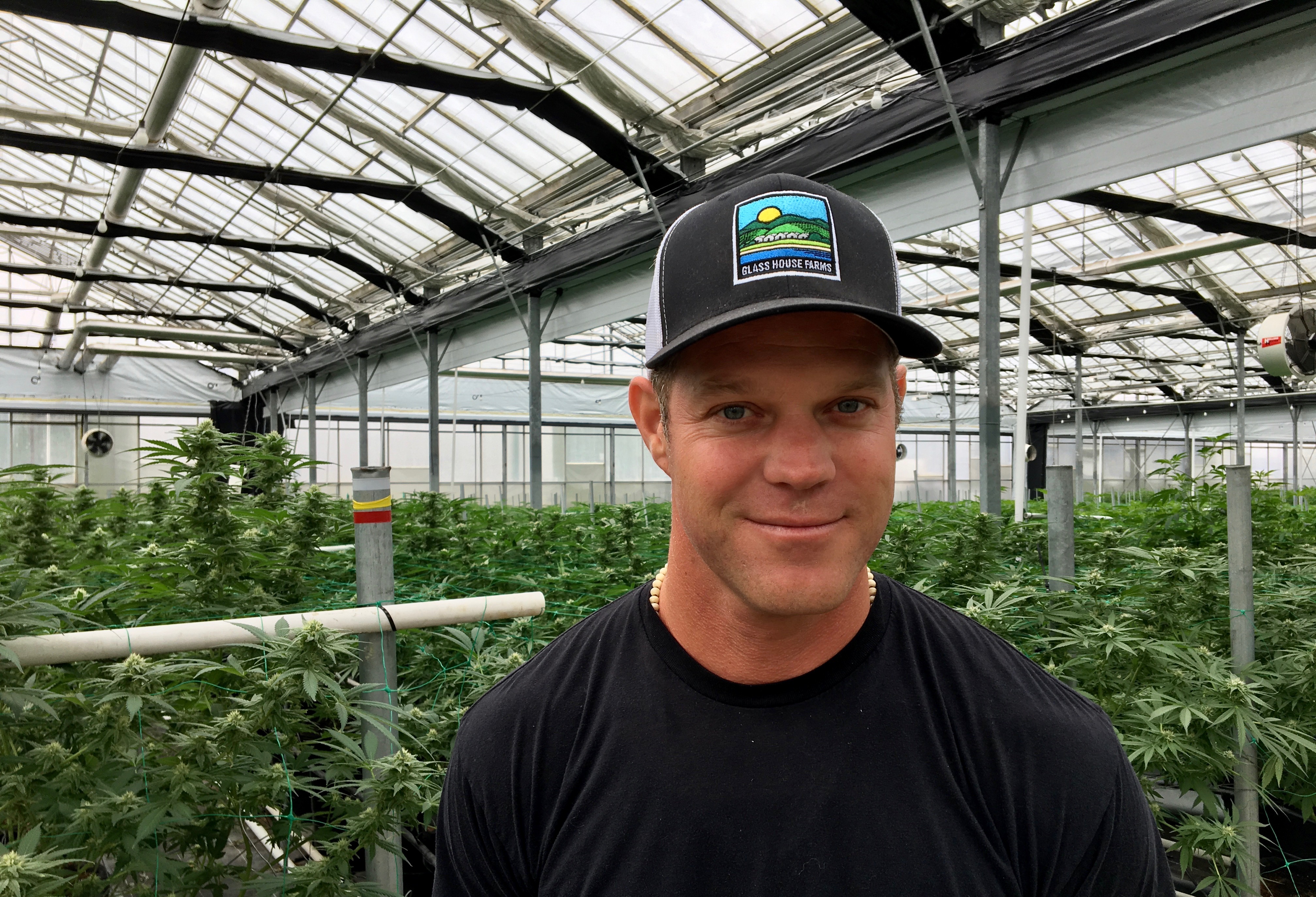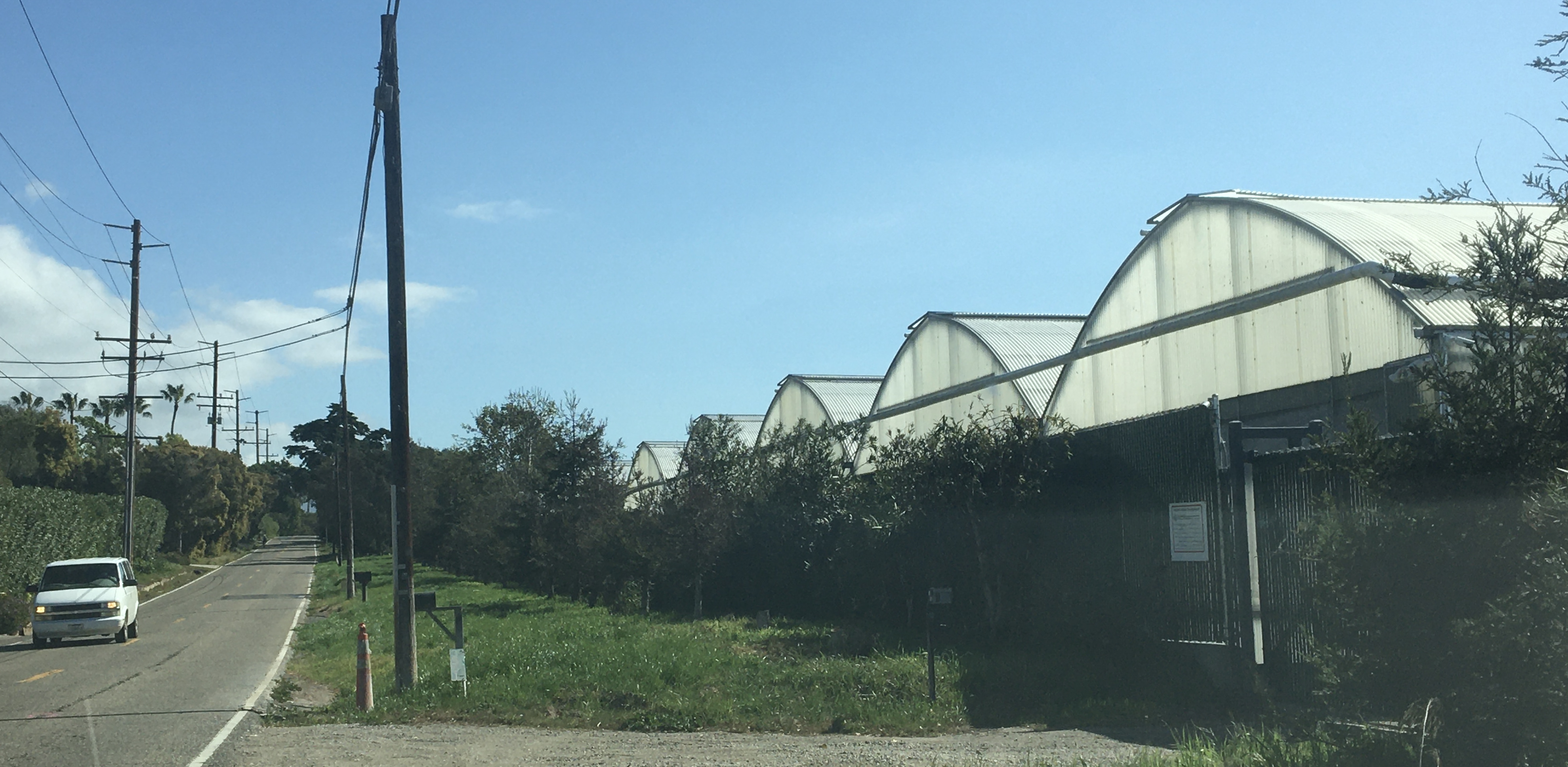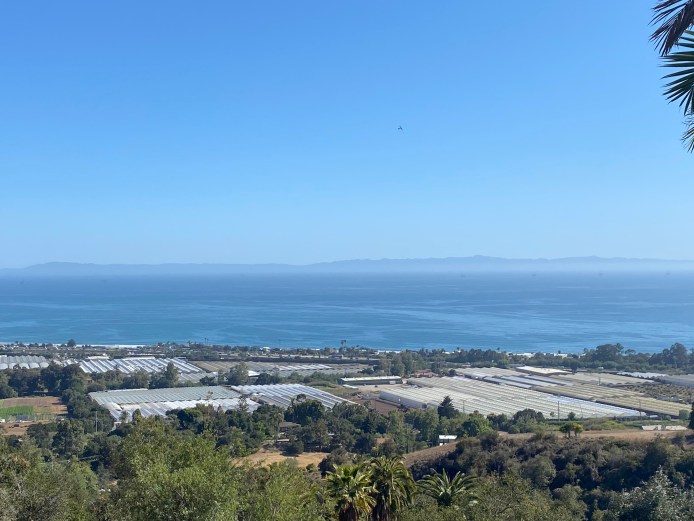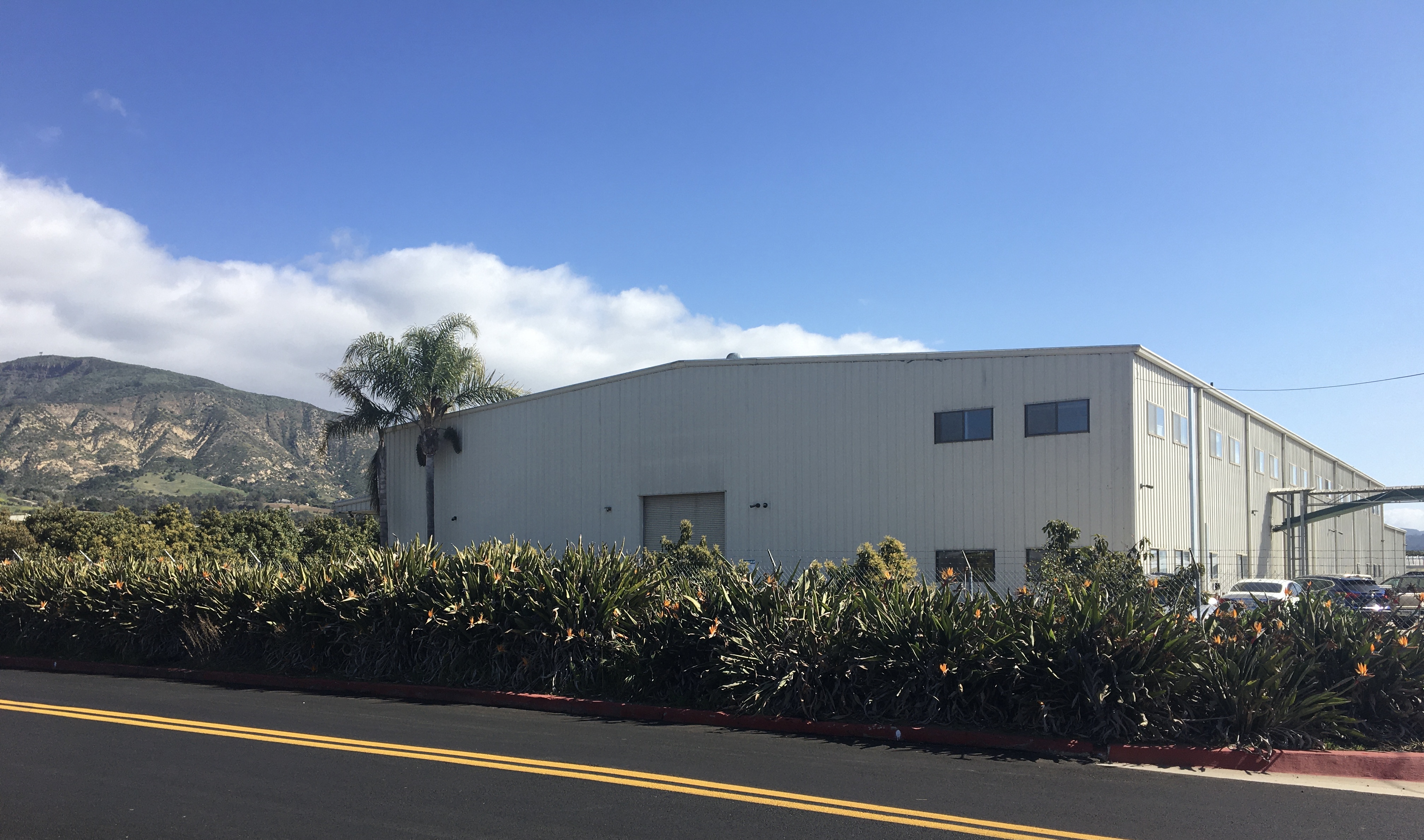Santa Barbara County Opens the Door to More Cannabis Processing
But Stiffer Odor-Control Regulations Are Coming in North County, Supervisors Say

The Santa Barbara County Board of Supervisors this week expanded the burgeoning cannabis industry in the North County and Carpinteria Valley, removing processing buildings from the acreage caps on cultivation there — a change that some residents viewed as a broken promise.
The new rule was part of a final 4-1 vote on Tuesday, with Chair Joan Hartmann opposed, on several amendments to the county’s cannabis business license.
Also on Tuesday, the board unanimously approved a 25,000-square-foot, state-of-the-art processing building at Glass House Farms, where eight acres of cannabis are under cultivation at 3561 Foothill Road in the Carpinteria Valley.

Processing is the smelliest stage of cannabis operations, but the building proposed by Graham Farrar, the Glass House president, is designed to be airtight and equipped with 19 carbon filters to “scrub” out the “skunky” smell of cannabis. The building will maintain negative pressure; that is, whenever a door is opened, the air will flow in so that odors can’t flow out.
“This is a historic day,” said Supervisor Gregg Hart, who represents the Goleta Valley. He praised Farrar’s plan as “a significant achievement, something to celebrate.”
“The bar is moving and is getting higher,” Hart said. “This project will improve the environment in the neighborhood and make things better.”
Presently, cannabis cultivation, including processing, is set at 1,575 acres outdoors in the North County and 186 acres in greenhouses in the Carpinteria Valley. Removing processing from the caps — about three acres in the North County and nine acres in the valley — would encourage the construction of cannabis processing buildings, including “stand-alone” buildings on properties with no cultivation, boosting county tax revenues, the board said. It would also free up 12 more acres for cultivation under the caps.
“I believe we can eliminate the barrier that is in place that keeps processing from happening, in a technologically sophisticated way that doesn’t impact neighborhoods,” Hart said. “I see this as a win-win.… If we don’t start to open the door to processing, we won’t get there. I don’t think we’re going to find ourselves with a rush of applications. Things will line up.”
Stricter Permits?
The change in the caps was requested by cannabis growers, many of whom said they had dropped their plans for processing in the race to obtain zoning permits before the acreage limits were reached. Growers who missed qualifying for the North County cultivation cap also said they would welcome the chance to develop stand-alone processing buildings.
But Nancy Emerson, a member of Santa Ynez Valley conservationist group WE Watch, one of several citizens’ organizations opposed to the new rules, said the county had not properly reviewed the amendment promoting cannabis processing. Residents had been assured that the board would not change the caps, she said, yet “most of you intend to break that promise.”
“There is no regulation of the total number allowed of these processing facilities, their size, location, or odor control,” Emerson said. “What worries us is that you are leaping into these changes with no careful considerations of the consequences for residents and existing agriculture.”
The amendment also was opposed by the City of Carpinteria and members of Concerned Carpinterians and the Santa Barbara Coalition for Responsible Cannabis, two groups that have sought stricter regulations for the industry. Anna Carrillo, one of the 300 members of Concerned Carpinterians, said Tuesday that as many as 25 “grows” in the Carpinteria Valley were already processing or had recently received permits to begin processing.
“Carpinteria should be excluded from the business license change,” Carrillo said.

To allay residents’ concerns, the supervisors said that this summer they would consider requiring more restrictive zoning permits, called conditional-use permits, primarily for future North County cannabis operations. These permits would require growers to show that their projects are “compatible with the surrounding area” and “not detrimental to the comfort, convenience, general welfare, health, and safety of the neighborhood.” (Farrar’s project required a conditional-use permit, or CUP.)
“I think we’re going to have the benefit of the CUP … for processing inland,” Supervisor Bob Nelson said. “Hopefully, that gives us the tools to address these real concerns and neighborhood compatibility issues.”
But Hartmann was not convinced, having repeatedly failed in the past to persuade her colleagues to require conditional-use permits for commercial cannabis. On Tuesday, she said she feared the measure still might not win majority board support. During the last fall harvest, the City of Buellton, which is downwind from several “grows,” was plagued for months by the stench of pot.
“We already know from bitter experience that it’s very difficult to know where the odor is coming from,” Hartmann said.
Glass House Appeal
On Tuesday, Farrar told the board that a new processing building at his Foothill property would allow him to move drying, trimming, and curing operations out of an old flower pack house at 5601 Casitas Pass Road, a second property where he is growing cannabis in greenhouses. He said he would no longer have to truck a third of his plants to Lompoc for processing, an hour away.

“It is unlike anything else we’ve seen in Carpinteria,” Farrar said of his proposed building. “Most of the existing processing facilities are old legacy packing houses that have been retrofitted. This is an air-tight, sealed, building-within-a-building. The entire design is for odor abatement. The odors can never build up. This is really what processing should look like.”

But 100 members of Concerned Carpinterians, a citizens’ group that has sought stiffer regulation of the cannabis industry, signed a petition against Farrar’s processing project last year. Since 2019, residents have filed more than 250 complaints with the county regarding the “skunky” smell of pot in the vicinity of the Glass House greenhouses on Foothill.
Farrar’s processing building was before the board on appeal from the county Planning Commission’s approval. Sarah Trigueiro, a resident of La Mirada Drive above Foothill, filed the appeal; she urged the board not to approve an expansion of what she said was “an existing nuisance with a poor operator track record.” Trigueiro said that residents of La Mirada Drive, Padaro Lane, the Polo condos, and homes on Foothill “are regularly subjected to noxious cannabis fumes that put our health at risk …”
“Despite countless complaints throughout the county’s cannabis odor complaint survey site and to county staff, the issues still persist,” Trigueiro said, adding that she has suffered headaches and nausea from the stink of pot.
“The county has not protected us,” she said.
‘False Narrative’
In response, Supervisor Das Williams, who represents the Carpinteria Valley and was a chief architect of the county’s permissive cannabis ordinance, sought to address what he called “a false narrative about what is happening in our town.”
Concerned Carpinterians has long advocated for cannabis operations to be conducted in sealed buildings equipped with carbon “scrubbers,” Williams said, and Farrar’s new processing building would do just that.

“What’s very strange is that there’s no joy even in victory, right?” Williams said. The county, he said, “has acted time and time again to incrementally improve the situation,” banning outdoor cultivation in the valley, shutting down “bad actors,” and suing a grower near Farrar’s Foothill operation. Williams noted, too, that CARP Growers, an industry group that Farrar belongs to, has pledged to install “best available control technologies” to reduce the smell of pot from their open-vented greenhouses.
Williams, who lives in Carpinteria, said he’s rarely smelled cannabis, while just two blocks away lives “one of the folks who writes in regularly about how the odor is unlivable at her house.” It is the same in the La Mirada neighborhood, Williams said, “undoubtedly a hot spot of concern and, probably, legitimately so”; some areas, he said, “don’t get the odor.”
“For most Carpinterians, this problem has gotten vastly better, largely due to the efforts both of growers and of staff and folks who are concerned about marijuana and are willing to make odor complaints,” Williams said.
Supervisor Steve Lavagnino, who represents the Santa Maria Valley, said he did not share Williams’s frustration but noted that only a handful of speakers weighed in on Tuesday against Farrar’s project, compared to the packed hearing rooms of the past. Lavagnino said the board had to weigh residents’ complaints against the tax revenues that the industry provides for county services.
“I feel for folks that are more impacted than others,” he said, “but it is a balancing game.”
Supervisor Nelson, who represents Orcutt and a portion of the wine country west of Buellton, said he had grown up with the pungent smell of sugar beets. Other crops smell, too, he said.
“I don’t think we’re ever not going to smell cannabis in this county,” Nelson said. “But I do want to eliminate the concentration where it becomes noxious, getting to a place where people can’t enjoy where they live. That is a problem, and the attack on this project is a proxy war on this issue.”
The ‘Catch-22’
Jeff Wilson, assistant director of county Planning & Development, told the board that the county has not been able to pinpoint Farrar’s operations as the source of residents’ odor complaints; other cannabis greenhouses are operating close by and there’s no way to determine who’s responsible, he said. As a result, Wilson said, no odor violations have been found at Farrar’s operations on Foothill, even though, he said, “We’re still getting calls, if not daily, about this site.”
“Staff has responded to numerous complaints,” Wilson said, “but we have not been able to verify that this site solely is the source of any odors.”
Chair Hartmann, who represents much of the wine country west of Buellton, called this a “catch-22.” The county, she said, “instituted regulations on odor beyond our ability to enforce.” Normally, Hartmann said, applicants with zoning violations cannot be approved for another permit until they address those violations. In Farrar’s case, she said, “because we can’t show where the odor is coming from, we find ourselves in this difficult position.”

Hartmann said she supported Farrar’s high-tech processing building. But, she said, the smell of cannabis that residents say is causing health problems and driving them to their wit’s end is “unacceptable” in both the North County and Carpinteria Valley and cannot not be ignored.
“There are people who are very sensitive to the odor of cannabis,” Hartmann said. “We’re up here dismissing them, and that is something I can’t let go unremarked.”
Williams responded that no one on the board was dismissing people who are sensitive to the smell of marijuana, but, he said, “It is just incorrect to validate the departure from reality in rhetoric that has become all too common in our society right now.”
In an interview after the hearing, Trigueiro said she would appeal the board’s decision to the state Coastal Commission this month.
“Das Williams,” she said, “seems to have made a strategic choice not to believe his constituents while voting for more cannabis processing and density that will worsen our quality of life.”
Melinda Burns is an investigative journalist with 40 years of experience covering immigration, water, science, and the environment. As a community service, she offers her reports to multiple local publications, at the same time, for free.
Support the Santa Barbara Independent through a long-term or a single contribution.




You must be logged in to post a comment.